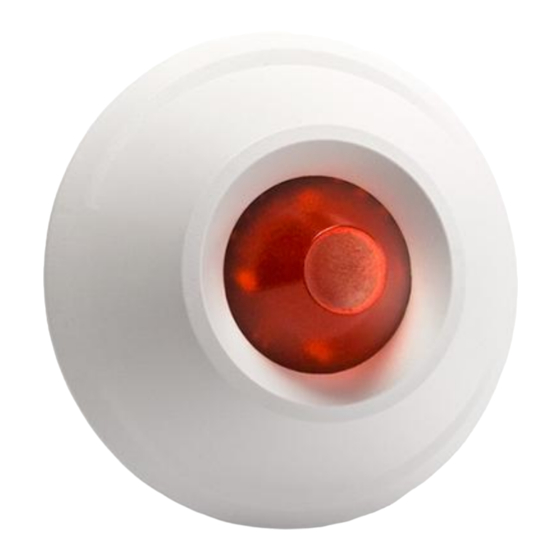
Advertisement
Table of Contents
WZ-100
REMOTE ALARM INDICATOR
The WZ-100 remote alarm indicator provides information by steadily lit LED that an alarm has
been reported by a detector or group of detectors. It is designed to be interfaced with
DMP-100, DRP-100 and DCP-100 detectors.
1. Installation
The remote alarm indicator is designed for indoor operation and should be installed in places
where it will be well-visible.
Disconnect power before making any electrical connections.
The length of wires connecting the indicator with the detector must not exceed
10 meters.
1. Turn the cover clockwise (Fig. 1) and remove it (Fig. 2).
2. Make holes for screws and cable in the enclosure base.
3. Run the cable through the hole in enclosure base.
4. Secure the enclosure base to the ceiling or wall, using wall plugs (screw anchors) and
screws.
5. Screw the wires to the corresponding terminals. Connect the indicator terminal marked by
the "-" sign to the terminal designated by the digit 2 in the detector base, and the terminal
marked by the "+" sign – to the terminal designated by the digit 3 or 4. An example of
connection of the remote alarm indicator to the detector is shown in Fig. 3.
6. Put the cover back and turn it counterclockwise.
®
wz-100_en 06/15
Advertisement
Table of Contents

Subscribe to Our Youtube Channel
Summary of Contents for Satel WZ-100
- Page 1 REMOTE ALARM INDICATOR wz-100_en 06/15 The WZ-100 remote alarm indicator provides information by steadily lit LED that an alarm has been reported by a detector or group of detectors. It is designed to be interfaced with DMP-100, DRP-100 and DCP-100 detectors.
- Page 2 Maximum humidity ......................93±3% Enclosure dimensions ..................ø 97 x 37 mm Weight ..........................48 g The WZ-100 remote alarm indicator meets the essential requirements of the Technical Approval CNBOP AT-0117-0401/2013 and the essential requirements of the European Union Directive: EMC 2004/108/ EC Electromagnetic Compatibility Directive.














Need help?
Do you have a question about the WZ-100 and is the answer not in the manual?
Questions and answers